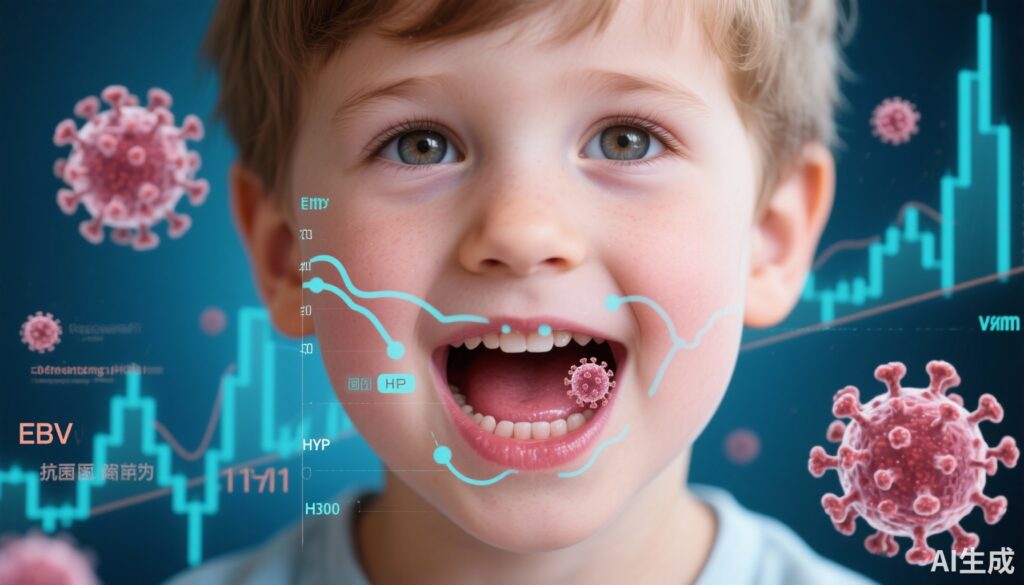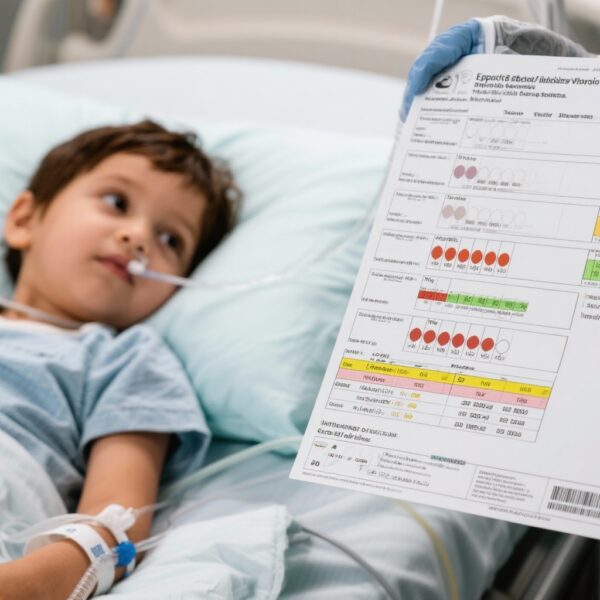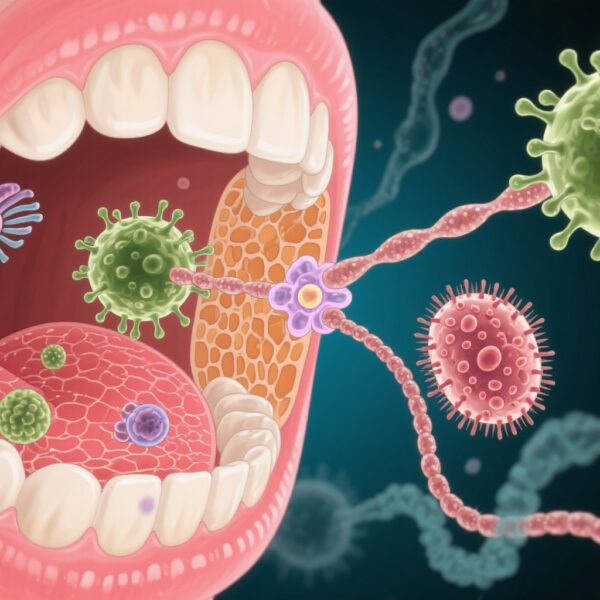Highlight
1. Early childhood EBV seropositivity is relatively low, with maternal EBV antibodies waning by 11 months.
2. Higher paternal education correlates with significantly reduced EBV seropositivity in young children.
3. Elevated EA-D antibody titers associate with increased risk for both incident oral HPV infection and its clearance.
4. Findings underscore the complex EBV-HPV interaction in early life, warranting further research to elucidate implications for later cancer risk.
Study Background
Epstein-Barr virus (EBV) and human papillomaviruses (HPVs) are widespread viral pathogens that frequently infect the oral mucosa and have well-established roles in various head and neck cancers. Despite extensive research on these viruses in adult populations, their natural history, interaction, and longitudinal impact within early childhood remain insufficiently characterized. EBV is typically acquired in childhood or adolescence and is linked to infectious mononucleosis and several malignancies, including nasopharyngeal carcinoma. Oral HPVs, commonly asymptomatic in young children, have been associated with oropharyngeal squamous cell carcinomas, whose incidence is rising globally.
Understanding how EBV serological status influences oral HPV infections during early childhood could provide valuable insights into viral coinfection dynamics and potential subsequent oncogenic risk. The Finnish Family HPV Cohort Study offers a unique longitudinal dataset to interrogate these relationships during the critical first three years after birth.
Study Design
This prospective cohort study enrolled 283 Finnish children from whom oral and blood samples were collected at six scheduled intervals at ages 1, 2, 6, 12, 24, and 36 months. HPV genotyping in oral samples utilized the Luminex platform, while EBV-specific IgG antibodies against viral proteins Zebra, early antigen-diffuse (EA-D), EBV nuclear antigen 1, and viral capsid antigen p18 were quantified through fluorescent bead-based multiplex serology.
Key endpoints included the timing of maternal EBV antibody waning, seroconversion to EBV in the children, and oral HPV infection incidence and clearance. Sociodemographic factors, especially paternal education level, were analyzed for associations with EBV seropositivity. Statistical analyses employed odds ratios (ORs) with corresponding 95% confidence intervals (CIs) to assess risk relationships.
Key Findings
Maternal EBV-IgG antibodies, reflective of passive immunity, declined in a majority of children (91.4%, n=254) by approximately 11.3 months of age, marking a critical window of susceptibility. By 36 months, only 17% (41/238) of children developed their own EBV antibodies, indicating relatively low early seroprevalence in this cohort.
A striking finding was the protective effect of elevated paternal education levels against EBV seropositivity in children at 2 and 3 years, with ORs spanning from 0.06 to 0.16 and 95% CIs ranging from 0.005 to 0.91. This association suggests socioeconomic factors influence EBV transmission or host susceptibility in early life.
Remarkably, children with high baseline titers of EA-D antibodies—a marker of active EBV replication—exhibited a 2.5-fold higher risk of incident oral HPV infection and a threefold increased rate of HPV clearance. This dual association may reflect a dynamic immunologic interaction between EBV activity and HPV mucosal infection kinetics, possibly mediated by immune modulation or viral interference effects.
Contrary to expectations, no direct correlation between overall EBV seropositivity and oral HPV prevalence or persistence was observed, indicating that EBV presence alone does not straightforwardly predict oral HPV infection outcomes in early childhood.
Expert Commentary
The findings enrich our understanding of how early-life viral immunology and socioeconomic environment intersect to shape oral mucosal infection trajectories. The relatively low EBV seropositivity contrasts with higher rates reported in other regions, underscoring geographic and population variability.
The significant association with paternal education suggests that prevention and intervention strategies may need to consider familial and community-level social determinants alongside biological risk factors.
Mechanistically, elevated EA-D antibodies may signify subclinical EBV reactivation episodes that transiently alter the oral immune milieu, thereby affecting HPV infection susceptibility and clearance dynamics. This hypothesis aligns with observations in adult cohorts linking EBV and HPV coinfections to carcinogenesis, although causality and exact pathways remain to be delineated.
Limitations include the relatively short three-year follow-up and lack of detailed functional immune assays, which constrain inference on long-term consequences and mechanistic insights. There is also a need to explore viral strain variability and host genetic factors.
Conclusion
This study from the Finnish Family HPV Cohort provides pivotal evidence that early childhood EBV seropositivity is limited and strongly influenced by paternal education levels. Elevated EA-D antibody titers correlate with increased risk of oral HPV acquisition and clearance, highlighting complex viral interactions in the oral mucosa.
These findings advocate for extended longitudinal research to clarify how early viral exposure patterns impact oral HPV natural history and potential carcinogenic pathways. Integrating viral serology with sociodemographic data enhances our capacity to identify at-risk populations and ultimately inform targeted preventive strategies to reduce HPV and EBV-associated cancer burdens later in life.
Funding and Clinical Trials
The study was supported by Finnish public health research grants. There are no associated registered clinical trials.
References
- Rinne S, Michels B, Butt J, Syrjänen K, Grenman S, Waterboer T, Syrjänen S, Louvanto K. Epstein-Barr virus (EBV) serology and its impact on oral human papillomavirus (HPV) infection outcomes in children during early childhood. Microbiol Spectr. 2025 Sep 2;13(9):e0007125. doi: 10.1128/spectrum.00071-25. PMID: 40748074; PMCID: PMC12403801.
- Clifford GM, Polesel J, Rickenbach M, et al. HPV type-distribution in invasive cervical cancers worldwide: Meta-analysis. Int J Cancer. 2003;123(1):215-223.
- Young LS, Rickinson AB. Epstein-Barr virus: 40 years on. Nat Rev Cancer. 2004;4(10):757-768.



